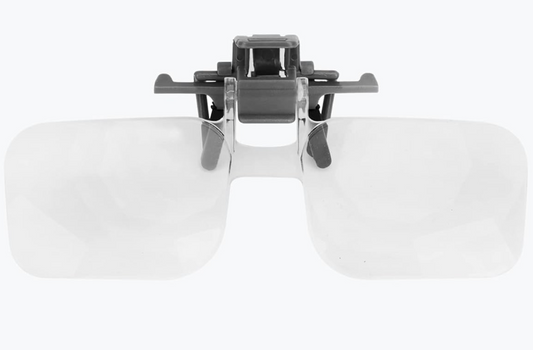What are Floaters?
Share
Understanding Vitreal Floaters: What You Need to Know
Vitreal floaters are a common visual phenomenon that many people experience at some point in their lives. While they are often harmless, a sudden onset of floaters can sometimes signal more serious eye conditions.
What Are Vitreal Floaters?
Vitreal floaters are tiny spots, lines, or cobweb-like shapes that appear to drift across your field of vision. These shapes are particularly noticeable when looking at a bright, uniform background, such as a blue sky or a white wall.
Despite their apparent location "in front" of your eye, floaters are actually shadows cast on your retina by small clumps of material within the vitreous humor—the gel-like substance that fills the eye. So in bright light situations - you are more likely to notice the shadows from the floaters.
How Do Vitreal Floaters Occur?
Floaters typically develop as a result of natural aging processes in the eye:
-
Aging of the Vitreous: Over time, the vitreous humor begins to liquefy and shrink, causing its gel-like consistency to break down. Small clumps of collagen fibers can form within the vitreous, creating the shadows that manifest as floaters.
-
Posterior Vitreous Detachment (PVD): In some cases, the vitreous pulls away from the retina, a condition known as posterior vitreous detachment. While PVD is generally benign, it often results in an increase in floaters. You may notice some lightening flashes to the side of your vision when this occurs.
-
Eye Injuries or Inflammation: Trauma to the eye or conditions such as uveitis (inflammation of the eye) can also lead to the formation of floaters.
-
Other Causes: Rarely, floaters can result from bleeding into the vitreous or debris from a retinal tear or detachment. Patients sometimes describe these floaters as light brown in colour.
How Common Are Floaters?
Floaters are extremely common, particularly as people age. Approximately 70% of people over the age of 50 report experiencing floaters to some degree. They are less common in younger individuals but can occur in cases of eye injury or specific medical conditions.
Normal Floaters vs. Symptoms of Retinal Detachment
While most floaters are harmless and simply a sign of aging, they can occasionally indicate a more serious problem, such as a retinal tear or detachment. Here’s how to differentiate:
Normal Floaters:
-
Gradual onset over time.
-
A few small, translucent shapes that move as your eyes move and seem to "settle" out of view.
-
No accompanying symptoms, such as pain or changes in vision.
When to Be Concerned:
-
Sudden Increase in Floaters: A sudden appearance of numerous floaters, especially if they are dark or opaque.
-
Flashes of Light: Seeing flashes of light in your peripheral vision can indicate the vitreous is pulling on the retina and possibly causing a retinal tear.
-
Loss of Vision: A shadow or "curtain" spreading across your vision may suggest retinal detachment and needs urgent treatment.
-
Blurred or Distorted Vision: Changes in the clarity or straightness of your vision.
If you experience any of these symptoms, seek immediate medical attention from an optometrist or ophthalmologist. Early intervention can prevent permanent vision loss.
Treatment Options for Floaters
Most floaters do not require treatment and can become less noticeable over time. However, in cases where floaters significantly impact quality of life or are caused by a serious condition, the following treatments may be considered:
-
Observation: In many cases, your brain will adapt to ignore floaters over time.
-
Laser Vitreolysis: A laser procedure to break up floaters and make them less noticeable.
-
Vitrectomy: A surgical procedure to remove the vitreous gel and replace it with a saline or gas solution. This is typically reserved for severe cases as there could be surgical risks that could cause permanent loss of vision.
Conclusion
Vitreal floaters are a common and usually harmless occurrence, particularly as we age. However, it’s essential to recognize the warning signs of more serious conditions like retinal detachment.
If you’re ever unsure about changes in your vision, consult an eye care professional promptly.
Regular eye exams are a vital part of maintaining overall eye health and catching potential issues early.




